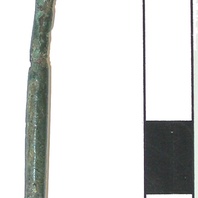
Viking Objects
Expanded-Head Pin (1986/975-AE86)
A copper-alloy pin found at the site of the Little Chester Roman fort. This loose find was found on top of a Roman metalled surface. It has a lozenge-shaped head that is typically Anglo-Scandinavian, but the lack of a secure finds context and its proximity to a Roman surface indicates that it could be Roman.
Read More
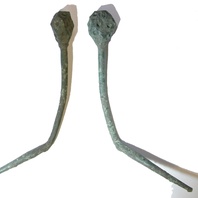
Viking Objects
Ring-and-Dot Pin (1986/976-SF4)
This copper alloy pin with a ring-and-dot pattern on the head was used for fastening cloaks. It was found on the site of Little Chester Roman fort. Pins like this were common in Ireland and the western British Isles, and spread further afield under Viking influence.
Read More
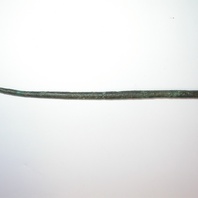
Viking Objects
Ring-headed Pin (1981/166-2568)
This copper alloy ring-headed pin was used for fastening cloaks and discovered during excavations at Full Street, Derby. Pins like this were common in Ireland and the western British Isles, and spread further afield under Viking influence.
Read More
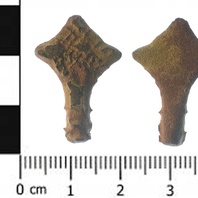
Viking Objects
Kite-Shaped Pin (SWYOR-53AEC4)
This type of kite-shape-headed pin is considered to be of Irish origin and imported through Viking activities.
Read More
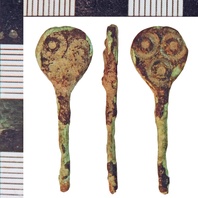
Viking Objects
Ring-and-Dot Pin (NLM-7A2D15)
Copper-alloy cast pin with a flat discoid head, no collar, and stamped decoration on the head, Flixborough type 601. The head bears three large [diameter 4.4mm] ring-and-dot motifs on each of its opposed faces. The tip of the shank is lost. The introduction of flat-headed pins with ring-and-dot decoration, superseding other types, is held by Dave Haldenby to mark the arrival of Viking settlers at Cottam, East Riding of Yorkshire. Suggested date: Early Medieval, 865-925. The finder suggests this to be part of an assemblage amounting to c.5% of material recovered from an extensive site, the rest being removed illicitly without record. Archaeological opinion holds the site to have been of equivalent character to Flixborough, North Lincolnshire, in terms of its material culture. Coins are under-represented in the group.
Read More
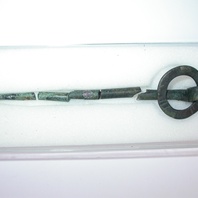
Viking Objects
Ring-headed Pin (2004-311-sf245)
This ring-headed pin was uncovered in a cremation burial which was generally unfurnished and containing little evidence. This type of pin was fairly common throughout the Viking Age and was used to hold a cloak around one’s body.
Read More
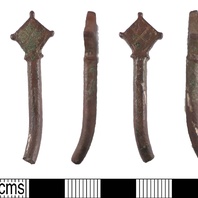
Viking Objects
Kite-Shaped Pin (PUBLIC-D9CE19)
This incomplete copper-alloy and niello pin is composed of a flat kite-shaped head with small rounded knop protrusion to three points. Both faces of the head are decorated with a cross that radiates to a narrow border and is inlaid with niello. These types of pins are generally considered to be of Irish origin and imported through Viking activities.
Read More
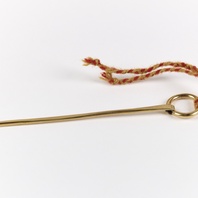
Viking Objects
Reproduction Ring-Headed Pin
A reproduction ring-headed pin used for fastening cloaks. Pins like this were common in Ireland and the western British Isles, and spread further afield under Viking influence.
Read More
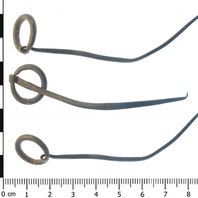
Viking Objects
Ring-Headed Pin (SWYOR-E57351)
The ringed pin was a form of dress fastener which developed as a result of contact between artisans in the Celtic West and sub-Roman Britain. The type became very popular in Ireland, being ultimately adopted by the Hiberno-Norse during the Viking period. In form it comprised a pin with a ring inserted through a looped, perforated or pierced head.
